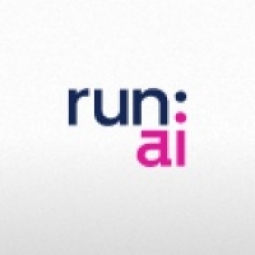公司规模
Large Corporate
地区
- Europe
国家
- United Kingdom
产品
- Run:ai's Platform
技术栈
- AI Hardware
- Deep Learning Training Models
- GPU Compute
实施规模
- Enterprise-wide Deployment
影响指标
- Productivity Improvements
- Innovation Output
技术
- 分析与建模 - 机器学习
- 应用基础设施与中间件 - API 集成与管理
适用行业
- 医疗保健和医院
适用功能
- 产品研发
用例
- 预测性维护
- 计算机视觉
服务
- 数据科学服务
- 系统集成
关于客户
伦敦医学影像与人工智能价值型医疗保健中心是一个由学术、医疗和行业合作伙伴组成的联盟,由伦敦国王学院牵头,总部位于圣托马斯医院。该中心利用英国国家医疗服务体系 (NHS) 持有的医学图像和电子医疗数据来训练复杂的深度学习算法,用于计算机视觉和自然语言处理。这些算法用于创建新的工具,以实现有效筛查、更快诊断和个性化治疗,从而改善患者的健康状况。
挑战
伦敦医学影像与人工智能中心(价值型医疗保健)的人工智能硬件面临多项挑战。尽管研究人员有需求,但 GPU 总利用率低于 30%,部分 GPU 仍有大量空闲时间。系统多次超载,需要运行作业的 GPU 数量超过可用数量。可见性和调度不佳导致延迟和浪费,需要大量 GPU 的大型实验有时无法开始,因为仅使用少量 GPU 的小型作业无法满足其资源需求。
解决方案
人工智能中心实施了 Run:ai 平台来应对这些挑战。该平台将 GPU 利用率提高了 110%,从而提高了实验速度。研究人员在 40 天内进行了 300 多次实验,而没有 Run:ai 的相同环境模拟中仅进行了 162 次实验。通过动态地将池化 GPU 分配给工作负载,硬件资源共享效率更高。该平台还通过高级监控和集群管理工具提高了可见性,使数据科学家能够查看哪些 GPU 资源未被使用,并动态调整其作业的大小以利用可用容量运行。该平台还实现了公平调度和保证资源,允许大型持续工作负载在低需求时段使用最佳数量的 GPU,并自动允许较短、优先级较高的工作负载同时运行。
运营影响
数量效益

Case Study missing?
Start adding your own!
Register with your work email and create a new case study profile for your business.
相关案例.

Case Study
Hospital Inventory Management
The hospital supply chain team is responsible for ensuring that the right medical supplies are readily available to clinicians when and where needed, and to do so in the most efficient manner possible. However, many of the systems and processes in use at the cancer center for supply chain management were not best suited to support these goals. Barcoding technology, a commonly used method for inventory management of medical supplies, is labor intensive, time consuming, does not provide real-time visibility into inventory levels and can be prone to error. Consequently, the lack of accurate and real-time visibility into inventory levels across multiple supply rooms in multiple hospital facilities creates additional inefficiency in the system causing over-ordering, hoarding, and wasted supplies. Other sources of waste and cost were also identified as candidates for improvement. Existing systems and processes did not provide adequate security for high-cost inventory within the hospital, which was another driver of cost. A lack of visibility into expiration dates for supplies resulted in supplies being wasted due to past expiry dates. Storage of supplies was also a key consideration given the location of the cancer center’s facilities in a dense urban setting, where space is always at a premium. In order to address the challenges outlined above, the hospital sought a solution that would provide real-time inventory information with high levels of accuracy, reduce the level of manual effort required and enable data driven decision making to ensure that the right supplies were readily available to clinicians in the right location at the right time.

Case Study
Gas Pipeline Monitoring System for Hospitals
This system integrator focuses on providing centralized gas pipeline monitoring systems for hospitals. The service they provide makes it possible for hospitals to reduce both maintenance and labor costs. Since hospitals may not have an existing network suitable for this type of system, GPRS communication provides an easy and ready-to-use solution for remote, distributed monitoring systems System Requirements - GPRS communication - Seamless connection with SCADA software - Simple, front-end control capability - Expandable I/O channels - Combine AI, DI, and DO channels

Case Study
Driving Digital Transformations for Vitro Diagnostic Medical Devices
Diagnostic devices play a vital role in helping to improve healthcare delivery. In fact, an estimated 60 percent of the world’s medical decisions are made with support from in vitrodiagnostics (IVD) solutions, such as those provided by Roche Diagnostics, an industry leader. As the demand for medical diagnostic services grows rapidly in hospitals and clinics across China, so does the market for IVD solutions. In addition, the typically high cost of these diagnostic devices means that comprehensive post-sales services are needed. Wanteed to improve three portions of thr IVD:1. Remotely monitor and manage IVD devices as fixed assets.2. Optimizing device availability with predictive maintenance.3. Recommending the best IVD solution for a customer’s needs.

Case Study
HaemoCloud Global Blood Management System
1) Deliver a connected digital product system to protect and increase the differentiated value of Haemonetics blood and plasma solutions. 2) Improve patient outcomes by increasing the efficiency of blood supply flows. 3) Navigate and satisfy a complex web of global regulatory compliance requirements. 4) Reduce costly and labor-intensive maintenance procedures.

Case Study
Cloud-based healthcare solution for Royal Philips
Royal Philips wanted to launch its cloud-based healthcare solution HealthSuite Digital Platform in China to deliver services to help cope with challenges related to urbanization and population growth. Philips wanted to achieve this goal by combining mobile, cloud computing and big data technologies. To bring this platform and product to market, Philips required cloud computing and local technical service capabilities in China, in addition to a flexible IT infrastructure that could handle user requests.








